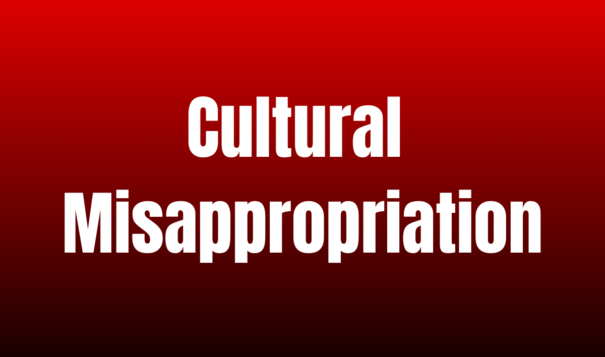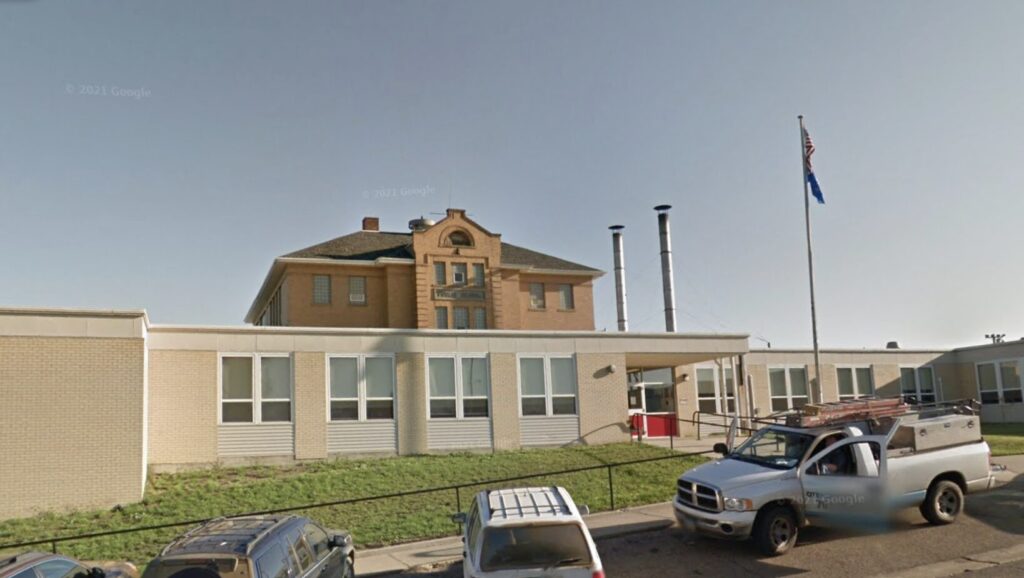News Based on facts, either observed and verified directly by the reporter, or reported and verified from knowledgeable sources.
Teacher queues up powwow song during formal prom, stirring white students to make ‘mockery of our tradition’
 Canva Art
Canva Art
Parental pushback spurs Flasher High School to seek cultural awareness training
On the morning after spring prom, Nicole Alkire woke up to a text from her teenage daughter, a junior at Flasher High School. When she clicked on a link her daughter sent her, she saw a video of Native cultural misappropriation at the prom night dance.
It showed a group of non-Native students engaged in a dance that misappropriated American Indian culture during the school prom on April 20, she told Buffalo’s Fire. “I really couldn’t believe what I was watching because there are so many Native students who go to Flasher school,” Alkire said.
The students in a video can be seen “dancing powwow incorrectly, screaming and hopping on one leg,” to a song called “Electric Powwow” by Halluci Nation, reports APTN, the world’s first national Indigenous broadcaster. Alkire said that one of the teachers is responsible for turning on the song. Her daughter’s friend, who attended prom, left the floor and sat on the bleachers throughout the duration of the song, recording the incident, she added. Some of the school’s Native students felt uncomfortable and left prom early after witnessing the dance.

The mother questioned why the faculty would allow a traditional song to be played without first consulting Native parents or students about appropriateness. “But just playing the song and letting non-Natives dance out there was like a mockery of our tradition and culture,” said Alkire. “That’s the way I’ve seen it. I didn’t see it as like some fun prom.”
Alkire wrote a letter to Flasher Public School Superintendent Jerry Erdahl on April 22 outlining the incident. She listed her concerns about the school’s cultural competency and inclusivity. The event caused distress and anger among some of the school’s Native students, she said, and it made Indigenous parents wonder if the school is a safe environment for their children.
While Erdahl apologized for the incident, Alkire said she needs to see action from the school since it caused harm in the community. The courses of action Alkire had listed in her letter to Erdahl begin with conducting a thorough investigation of the incident. Next, Flasher must provide cultural sensitivity training to students and staff. She noted that Flasher should implement clear policies that prevent cultural insensitivity and promote a respectful learning environment for students.
“It’s important for Native children to feel safe and heard and seen at these public schools where they’re the minority.”
Nicole Alkire- Standing Rock Citizen and mother of Flasher High School student
Flasher Public School is located in Morton County in southwestern North Dakota, about an hour from the Standing Rock Sioux Indian Reservation. The school teaches K-12 and has about 230-250 students enrolled each year. The town of Flasher has a population of 221 residents. Most students come from towns within a 40-mile radius, such as Fort Yates, Carson and Mandan. According to the Public School Review, about 10% of Flasher High School students are American Indian, making Natives the biggest minority group in the district. For Alkire, it’s alarming that there aren’t more cultural programs to address the needs of Native students.
Administrators agree with parents on implementing more cultural awareness so an incident like this doesn’t happen again. In an interview with Buffalo’s Fire, the superintendent said they are communicating with educators and leaders from the Standing Rock Sioux Tribe to discuss how to create a cultural awareness program or session for staff and students.
He’s also reached out to the cultural coordinator at the local Central Regional Education Association. “It’s time to educate the students and the staff and we need to look at some cultural sensitivity issues that affect people’s morals, values, and beliefs,” said Erdahl. “Again, we’re just sorry for offending those who were insulted by the actions.”
“It has to be meaningful education so that people learn from it, so that’s why we wanted to go to the tribal leaders and say, ‘Okay, what do you think we need to do?’” said Erdahl. “What ideas would these tribal leaders have for us and what approach should we take?”
Alkire said the school has given no update since the superintendent’s apology, and she hopes the administration continues to reach out to the Native community to grow from this incident. “I think that by personally talking with parents and Native students, they can gain a better understanding and repair some hurt and pain that was brought up, like old history from [generational] trauma,” said Alkire. “I don’t think that white people really fully understand the trauma that it brings up, non-Natives doing stuff like this.”
“I don’t think that white people really fully understand the trauma that it brings up, non-Natives doing stuff like this.”
Nicole Alkire- Standing Rock Citizen and mother of Flasher High School student
Erdahl told Buffalo’s Fire, “Now it’s time to start building some bridges and come into educating our kids and our staff about what’s acceptable and what’s not acceptable because there was no intentional intent to disrespect anybody.”
Alkire’s daughter didn’t attend prom, but didn’t go back to school on Monday after prom weekend because she felt uncomfortable around her classmates. Her Native friends who did go to prom also felt awkward returning to classes, Alkire said.
When her daughter returned on Tuesday, she didn’t receive an apology from students who participated in the dance. However, some teachers who were chaperones approached her and apologized for not intervening while the incident was occurring.
“It’s important for Native children to feel safe and heard and seen at these public schools where they’re the minority,” said Alkire. “It’s easy to feel like you don’t belong when you’re not in a school on the reservation or from your hometown.”
Sourcing & Methodology Statement:
Flasher 39 School District. Public School Review. (n.d.). https://www.publicschoolreview.com/north-dakota/flasher-39-school-district/3806930-school-district
Dateline:
BISMARCK, N.D.
